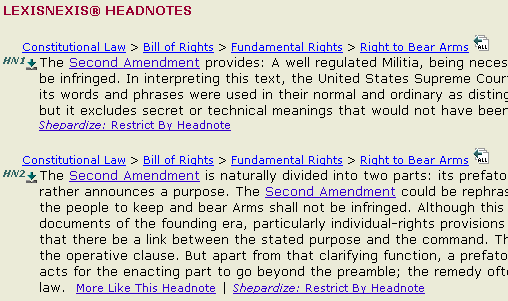Headnotes, found at the beginning of cases in both Westlaw and LexisNexis, are a valuable research tool. Because of their long life and their impact on legal research and the legal profession, West’s headnotes with their Topics and Key Numbers have been analyzed and explained many times. (Here’s one example.)
On the other hand, LexisNexis headnotes have been a bit more of a mystery to me. LexisNexis has always made it clear that the text of their headnotes is taken straight from the text of the case. (This is different than West’s headnotes, which are written by an editor.) But, it has taken me a bit longer to get an accurate understanding of how the topics and subtopics in a Lexis Headnote were created and assigned. When I have asked Lexis employees about this, some have not known how the process works and at least once I was given some misinformation – that the process was done mostly by computers. Now, finally, I have an explanation that Lexis seems ready to stand by. Here’s an excerpt from an email from Michael Morton, my regional account manager.
“[T]he editor reads the case and manually chooses the classifications. He or she has a tool much like an index that has all of the classifications listed there (topics and subtopics). For each point of law in the case that the editor chooses to include as a headnote, he or she then selects the most relevant subtopic/topic. Often they are given more than one as obviously they can not be hammered into only one subtopic. If the language does not fit any current topics, then the editor can request a new one created and a committee of editors makes that decision, but that is very rare. Once the editor has chosen the language and matched the topics, the secondary editors then check that to make sure it is correct.


